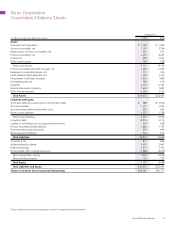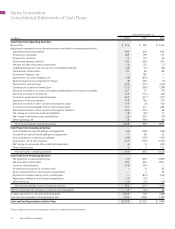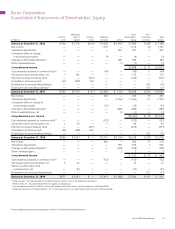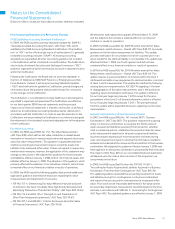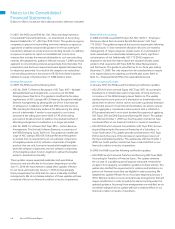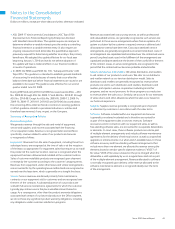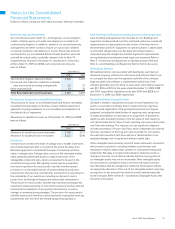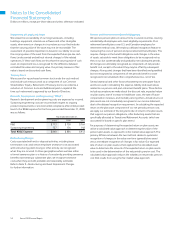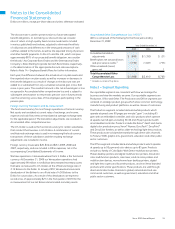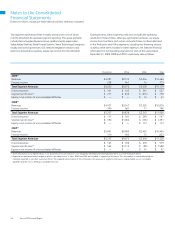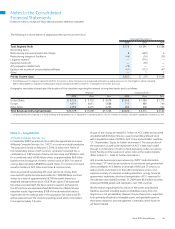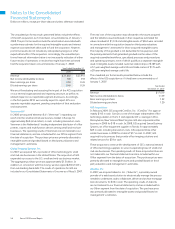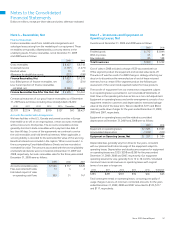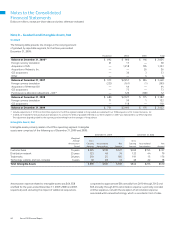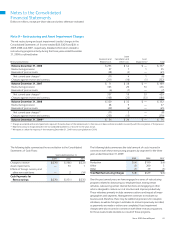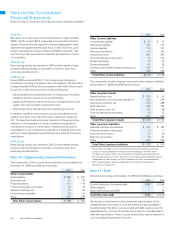Xerox 2009 Annual Report Download - page 54
Download and view the complete annual report
Please find page 54 of the 2009 Xerox annual report below. You can navigate through the pages in the report by either clicking on the pages listed below, or by using the keyword search tool below to find specific information within the annual report.
52 Xerox 2009 Annual Report
Notes to the Consolidated
Financial Statements
Dollars in millions, except per-share data and unless otherwise indicated.
Pension and Post-retirement Benefit Obligations
We sponsor pension plans in various forms in several countries covering
substantially all employees who meet eligibility requirements. Post-
retirement benefit plans cover U.S. and Canadian employees for
retirement medical costs. We employ a delayed recognition feature in
measuring the costs of pension and post-retirement benefit plans. This
requires changes in the benefit obligations and changes in the value
of assets set aside to meet those obligations to be recognized not as
they occur, but systematically and gradually over subsequent periods.
All changes are ultimately recognized as components of net periodic
benefit cost, except to the extent they may be offset by subsequent
changes. At any point, changes that have been identified and quantified
but not recognized as components of net periodic benefit cost are
recognized in Accumulated other comprehensive loss, net of tax.
Several statistical and other factors that attempt to anticipate future
events are used in calculating the expense, liability and asset values
related to our pension and post-retirement benefit plans. These factors
include assumptions we make about the discount rate, expected return
on plan assets, rate of increase in healthcare costs, the rate of future
compensation increases, and mortality among others. Actual returns on
plan assets are not immediately recognized in our income statement,
due to the delayed recognition requirement. In calculating the expected
return on the plan asset component of our net periodic pension cost,
we apply our estimate of the long-term rate of return to the plan assets
that support our pension obligations, after deducting assets that are
specifically allocated to Transitional Retirement Accounts (which are
accounted for based on specific plan terms).
For purposes of determining the expected return on plan assets, we
utilize a calculated value approach in determining the value of the
pension plan assets, as opposed to a fair market value approach. The
primary difference between the two methods relates to systematic
recognition of changes in fair value over time (generally two years)
versus immediate recognition of changes in fair value. Our expected
rate of return on plan assets is then applied to the calculated asset
value to determine the amount of the expected return on plan assets
to be used in the determination of the net periodic pension cost. The
calculated value approach reduces the volatility in net periodic pension
cost that results from using the fair market value approach.
Impairment of Long-Lived Assets
We review the recoverability of our long-lived assets, including
buildings, equipment, internal-use software and other intangible
assets, when events or changes in circumstances occur that indicate
that the carrying value of the asset may not be recoverable. The
assessment of possible impairment is based on our ability to recover
the carrying value of the asset from the expected future pre-tax cash
flows (undiscounted and without interest charges) of the related
operations. If these cash flows are less than the carrying value of such
asset, an impairment loss is recognized for the difference between
estimated fair value and carrying value. Our primary measure of fair
value is based on discounted cash flows.
Treasury Stock
We account for repurchased common stock under the cost method
and include such treasury stock as a component of our Common
Shareholders’ Equity. Retirement of Treasury stock is recorded as a
reduction of Common stock and Additional paid-in capital at the
time such retirement is approved by our Board of Directors.
Research, Development and Engineering (“RD&E”)
Research, development and engineering costs are expensed as incurred.
Sustaining engineering costs are incurred with respect to ongoing
product improvements or environmental compliance after initial product
launch. Our RD&E expense for the three years ended December 31, 2009
was as follows:
Year Ended December 31,
2009 2008 2007
R&D $ 713 $ 750 $ 764
Sustaining engineering 127 134 148
Total RD&E Expense $ 840 $ 884 $ 912
Restructuring Charges
Costs associated with exit or disposal activities, including lease
termination costs and certain employee severance costs associated
with restructuring, plant closing or other activity, are recognized
when they are incurred. In those geographies where we have either
a formal severance plan or a history of consistently providing severance
benefits representing a substantive plan, we recognize severance
costs when they are both probable and reasonably estimable.
Refer to Note 9 – Restructuring and Asset Impairment Charges
for further information.



